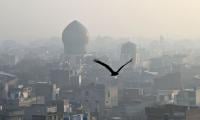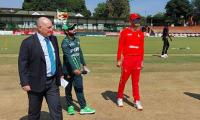QUETTA: Ever since becoming leader of the Taliban in 2015, Mullah Akhtar Mansour knew he was at the top of the CIA’s kill list. Aware of the prospect of a missile with his name on it, he stayed on the move and often travelled incognito, foreign media reports.
Yet on the day last May when a drone strike hit the battered taxi he was travelling in, he might have been forgiven for feeling more relaxed than usual. It happened not as he was driving through the Taliban heartlands of Afghanistan, but near Quetta – long considered a haven for the Taliban leadership.
In Quetta, a dusty frontier town ringed by mountains such accusations have swirled since 2001, when the late Mullah Omar was said to have fled there after the US-led invasion of Afghanistan. In 2009, then commander of US forces in Afghanistan, Gen Stan McChrystal, said the Taliban’s Quetta Shura, or council, "conducts a formal campaign review each winter, after which Mullah Omar announces his guidance and intent for the coming year".
"It’s a blatant lie to suggest that the Taliban are based here," said Anwarul Haq Kakar, Quetta’s senior government spokesman, over a dinner in Quetta’s heavily-guarded Serena Hotel. "After all, they control more than half of Afghanistan as it is. Why come here to plan things when they can attack the heart of Kabul?" All the same, for most of the past decade, the government has been notably reluctant to let journalists near Quetta at all.
Permits to go to the city were almost always denied – possibly because of widespread accounts that the Taliban operated openly here. According to one report in 2011, landlords in Quetta’s Kharotabad neighbourhood were renting out so many homes to Taliban fighters on combat leave from Afghanistan that locals feared the area would attract US drone strikes.
"There’s no doubt that some of the Taliban we were fighting were trained in Pakistan, and got resupplied there," said James Glancy, a British army captain who fought in Sangin in Helmand, which the Taliban recaptured from Afghan forces last month.
"The biggest indicator that Pakistan was calling the shots was the way the Taliban fighting season was always from spring to the end of autumn, because traditionally the mountain passes to Pakistan freeze up at that time and make access difficult."
True, on the streets of Quetta itself, the only thing to remind the visitor of the Taliban are the large numbers of Afghan refugees, including Mullah Omar lookalikes sporting the same black beards, turbans and white robes.
"We’ve heard claims about the Taliban being here," said Waseem, 40, a gunsmith, to nods from customers in his shop. "But we’ve never met any." Other locals, though, claim that certain neighbourhoods – including Kharotabad, Pashtunabad, and the outlying town of Kuchlak – remain Taliban strongholds.
Reports indicate that they tried to breach one of gates, harassed staff, and even scaled walls of premises
Nasir praised role of Interior Minister Syed Mohsin Naqvi, who controlled situation with tolerance
A fierce exchange of fire ensued, but culprits managed to escape under cover of darkness
Police said booked leaders and BYC workers gathered at main Turbat Chowk
Experts say draconian internet censorship threatens to cut country off from promising future
Bokhari emphasised that cases have been registered against "Fasadis", and no one will be spared







